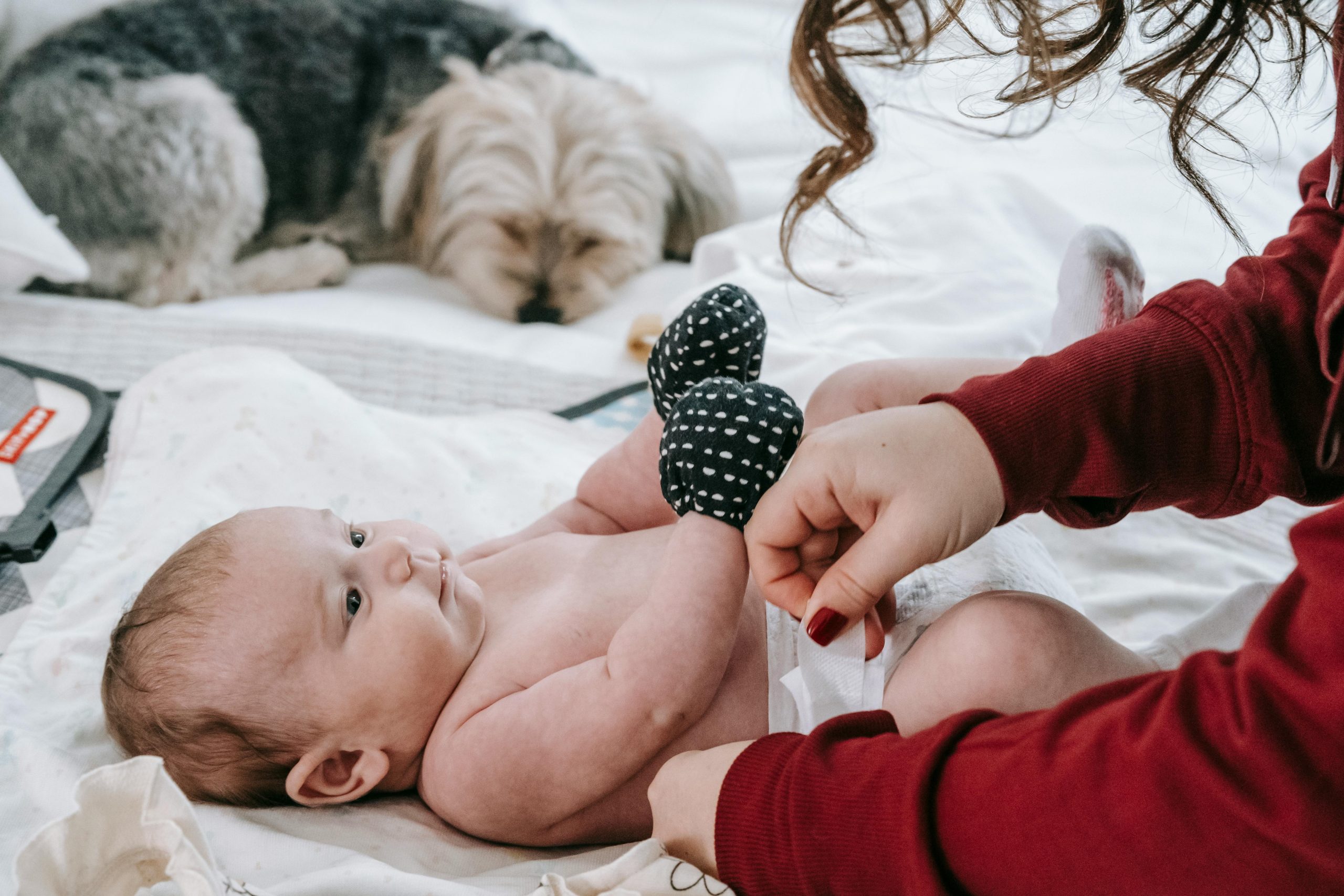Changing a Newborn’s Diaper Guide
Changing a newborn’s diaper might seem daunting at first, but with patience, practice, and the right technique, it becomes a routine part of caring for your little one. Below is an extensive guide that breaks down this essential task into clear steps
Step 1: Preparing for the Change
Before you begin, ensure you have everything you need within arm’s reach. This includes:
- A clean diaper
- Baby wipes or a soft washcloth and warm water in a bowl
- Diaper rash cream, if necessary
- A changing pad or mat, plus a waterproof cover for added protection
- A change of clothes, should there be any accidents or spills
As soon as you notice your baby needs a diaper change, promptly create a comfortable and safe environment by placing them on the changing area, securing them with a safety strap if available.
Step 2: Removing the Soiled Diaper
First, unfasten the tabs or Velcro strips on the dirty diaper, being careful not to pull too hard to avoid skin irritation. Next, gently lift your baby’s legs using one hand, while holding their ankles securely with your fingers.
Simultaneously, use your other hand to slide the soiled diaper out from under your baby, folding it inward so that the mess stays contained. If there’s poop, use a wipe or damp cloth to clean the area from front to back, ensuring no residue remains near the genitals to prevent urinary tract infections.
Step 3: Cleaning Your Baby
After removing the old diaper, thoroughly clean your baby’s bottom using baby wipes or a wet washcloth. Remember, always wipe girls from front to back to prevent bacteria from entering the urethra. For boys, be cautious when cleaning around the penis to avoid direct contact with urine.
Once the area is clean, give your baby some air time to dry, which can help prevent diaper rash. If your baby has sensitive skin or already shows signs of diaper rash, apply a thin layer of diaper cream before putting on the new diaper.
Step 4: Putting On the Clean Diaper
While keeping one hand supporting your baby’s bottom, take the new diaper and open it up, positioning it beneath your baby. Ensure the back half of the diaper, where the tabs are located, is higher than the front half, covering your baby’s bottom adequately.
Then, bring the front half of the diaper up towards your baby’s tummy, pulling it snugly but not tightly over their waistline. Fasten the tabs on both sides, making sure they’re secure but not overly tight – you should be able to fit two fingers between the diaper and your baby’s belly comfortably.
In case your baby is a boy, consider pointing his penis downward before fastening the diaper to prevent leaks during urination.
Step 5: Dressing Your Baby and Cleaning Up
Once the diaper is properly secured, dress your baby in fresh clothes, ensuring all clothing items are free from any potential irritants. Afterward, dispose of the soiled diaper and wipes in a trash bag, and sanitize your hands thoroughly.
Finally, tidy up the changing area, wiping down surfaces with disinfectant wipes if necessary. And, remember to praise and engage with your baby throughout the process, turning a practical task into a bonding moment.
Transitioning to Maintenance and Safety Tips:
- Always keep a close eye on your baby during diaper changes to ensure their safety.
- Regularly check diapers, especially after feedings or naps, as newborns often need frequent changes.
- When traveling, pack a diaper-changing kit to have everything you need readily accessible.
- As your baby grows and develops, the diaper-changing process may evolve; adapt your techniques accordingly.
Conclusion: Mastering the Art of Newborn Diaper Changes
In conclusion, mastering the art of changing a newborn’s diaper involves preparation, hygiene, and attentiveness. With consistent practice and the application of these step-by-step instructions, you’ll develop a seamless routine that not only keeps your baby clean and comfortable but also fosters nurturing moments in those early days of parenthood. Remember, every parent experiences a learning curve, so be patient and gentle with yourself as well as your baby.

